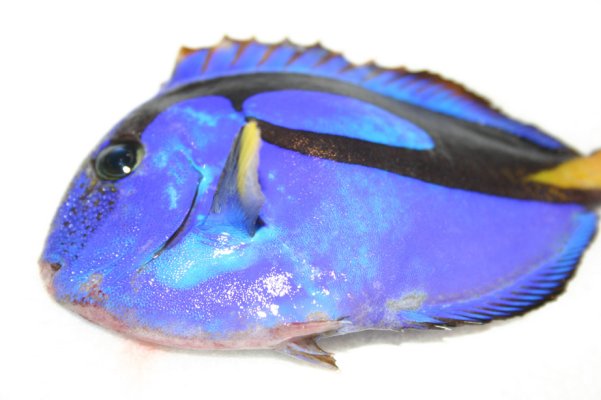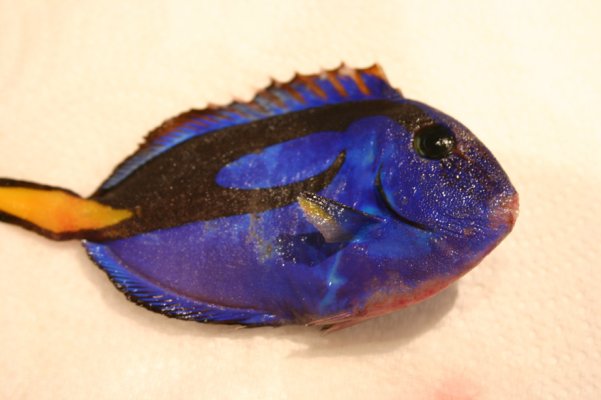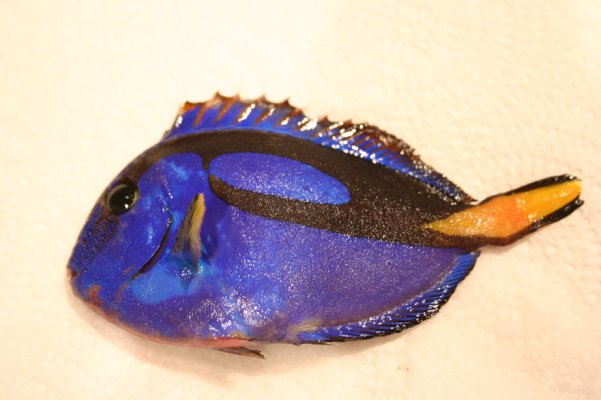BlueDolphin
Aquarium Advice Freak
Hello all. I have had my tank up and running (with the exception of a move over a year ago) for about 4-5 years now. I have a Regal Tang, Percula Clown, and Black and Yellow Blenny. The tang was my first fish, followed by the clown, and the blenny came about a year ago. All of my fish were QT'd, and have never had a problem until a few days ago. I noticed my Tang had a white spot on her side (like she had rubbed up against something). Then she began swimming erratically, hiding a lot, and not eating. Today, I noticed her dorsal fin is looking brown and frayed. I suspected ich to begin with, but usually only hear about it developing from new fish being introduced without QT'ing them. Is is possible to develop spontaneously like this? The clown and the blenny are absolutely fine so far...



